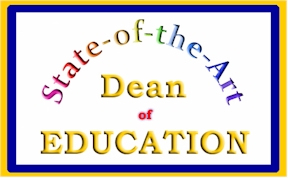
|
The George Washington University |

|
The George Washington University |
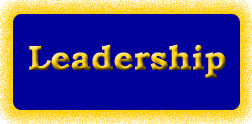 |
 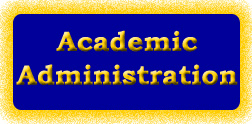  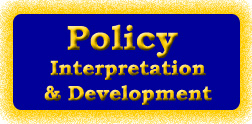 |
One set of Skills that the Dean of the School of Education Needs to Have in order to be a State-of-the-Art Dean is the Leadership Skills: s/he should be a dynamic, enterprising, and visionary Academic Leader
- who is committed to excellence and innovation in education (cf. Covey)
- who possesses uncompromising integrity and ethics (cf. Lickona)
- who has outstanding communication skills (cf. Covey & Goleman)
- who has a demonstrated commitment to diversity (cf. Thomas)
Commitment to Excellence & Innovation || Communication Skills--
Leadership According to Stephen Covey: (1989)In his best seller titled "The 7 Habits of Highly Effective People," Stephen Covey covers the following 7 habits that he says any leader should have:
1. Be Proactive.
2. Begin with the End in Mind.
3. Put First Things First.
4. Think "Win-Win."
5. Seek First to Understand...Then to Be Understood.
6. Synergize.
7. Sharpen the Saw.
Covey also asserts in his book that every leader needs to generate and sustain trust.
We infer from the above that, in order to show commitment to excellence and innovation and in order to exhibit outstanding communication skills, a State-of-the-Art Dean of Education needs to:
- Be Proactive, act versus react, take the initiative, and innovate.
- Begin with the End in Mind: shape a vision of the future and have a clear purpose.
- Put First Things First: once the dean has set his/her priorities, s/he needs to follow through.
- Think "Win-Win": work toward mutual benefit. Foster support, mutual respect, and interdependence.
- Seek First to Understand...Then to Be Understood: listen to others with understanding as the intent.
- Synergize: work in a way that the whole becomes greater than the parts.
- Sharpen the Saw: constantly look for new opportunities for improvement.
- Finally, generate and sustain trust!
Integrity & Ethics--
Leadership According to Thomas E. Lickona: (1991- Character Education)Thomas Lickona talks about Educating for Character in schools. One might wonder how this is related to the Dean of Education's leadership. Well, if schools need to educate for character, and the teachers in those schools are trained under the leadership of the dean of education who is supposed to lead by example, then we can definitely infer that the dean of education must have character education as a priority; and this should be portrayed in this dean's state-of-the-art leadership style.
What does educating for character mean?
Educating for Character means, according to Lickona, that schools have to teach values; they should seek to form the individual’s intellect as well as his character. Our society needs people who care, who use their intelligence to benefit others too, not only themselves. If we want democracy to succeed, we need values to dominate.
Lickona suggests that schools teach specific moral values -- universal ones -- without giving students a moral choice since “there is common ethical ground even in our value-conflicted society: justice, honesty, civility, democratic process, and a respect for truth.” (p. 20)
What is good character? Lickona argues that it is easy to say that we want our students to have good character, but in order to achieve this, we have to specify those character traits we want to build in them. A person of character is trustworthy, responsible, respectful, fair & just, caring, empathetic, self-controlled, and, above all, s/he is a good citizen who obeys laws and plays by the rules.
“Good character consists of knowing the good, desiring the good, and doing the good. We want our children to be able to judge what is right, care deeply about what is right, and then do what they believe to be right.” (p. 51)
If this is what the school of education needs to preach, then the State-of-the-Art Dean of this school must set a good example. Hence, the dean should show that s/he cares, should use his/her intelligence to benefit others too, should embody integrity, ethics, justice, fairness, empathy, honesty, responsibility, civility, citizenship, self-control, tolerance, and respect for truth.
Communication Skills--
Leadership According to Daniel Goleman: (1995 - Emotional Intelligence)According to Daniel Goleman, IQ alone is no more the measure for success; emotional intelligence (one of whose major components is people/communication skills), social intelligence, and luck also play a big role in a person's success (1995). If emotional intelligence is considered nowadays vital for success, then a State-of-the-Art Dean of Education needs to have a high Emotional Intelligence Quotient (EQ).
Emotional Intelligence is being able to monitor our own and others' feelings and emotions, to discriminate among them, and to use this to guide our thinking and actions (Salovey & Mayer, 1990). The emotionally intelligent person is skilled in four areas: Identifying, using, understanding, and regulating emotions (Salovey & Mayer, 1993).
According to Goleman (1995), emotional intelligence consists of five components:
- Self-awareness: Knowing our emotions, understanding our own feelings. “Recognizing a feeling as it happens (Metamood) is the keystone of emotional intelligence." It is a difficult skill since emotions often appear in disguise.
Self-awareness allows us to exercise self-control.
“Anyone can be angry, but to be angry with the right person, to the right degree, at the right time, for the right purpose, and in the right way—this is not easy.” (Aristotle)
- Mood Management: Strategies for handling/escaping foul moods should be very useful.
- Self-motivation: To motivate ourselves for any achievement requires clear goals and an optimistic can-do attitude. We should have enthusiasm, zeal, and confidence.
- Impulse control: Being able to regulate emotions in a way that enhances living, to delay impulse in the service of a goal > emotional self-regulation. The ability to delay gratification is a master skill, a triumph of the reasoning brain over the impulsive one; it is a sign of emotional intelligence.
- People skills: Handling relationships- Empathy (recognizing emotions in others, putting ourselves in their shoes), Communication, Warmth, Graciousness, Ability to read a social situation (to know how others feel) => Good inter-personal skills.
In order to measure a person’s ability to read emotional cues > PONS (Profile Of Nonverbal Sensitivity) Test.
People with higher PONS score tend to be more successful in their work and relationships.Emotionally intelligent people are, Goleman argues, more likely to succeed in everything they undertake. Hence, a State-of-the-Art Dean of Education needs to have a high Emotional Intelligence Quotient (EQ) including excellent people skills..
Commitment to Diversity--
Leadership According to R. Roosevelt Thomas Jr.* (Coaching for Strategic Diversity Management)
Also: Diversity News/ Sep 07; Best Practices for Managing Organizational Diversity; Diversity Management: An Essential Craft for Leaders-- by R. R. Thomas Jr., 2006; Managing work-place diversity… the wave of the '90s; Working With Diverse Cultures.A State-of-the-Art Dean of Education definitely needs to show commitment to diversity, but more importantly needs to know how to manage diversity.
In "Diversity News," Thomas (2007) states that "the BOTTOM LINE for diversity management is OPTIMAL PERFORMANCE—for individual employees, for work groups and teams, for offices, and for the organization overall. A goal which SHOULD be shared by managers at all levels of the organization."
In "Diversity Management: An Essential Craft for Leaders," Thomas (2006) argues that "future leaders will differentiate between representation and diversity. Representation will refer to the presence of multiple races and both genders in the workplace, while diversity will refer to the behavioral differences, similarities, and tensions that can exist among people when representation has been achieved" (p.1).
In "Coaching for Strategic Diversity Management" Thomas claims that "strategic diversity management is the process of making quality decisions in the midst of differences, similarities, and tensions."
In his workshop titled "Managing a Culturally Diverse Workforce" given at GW on November 27, 2007, Rob Brady lists some strategies for managing a diverse workforce taken from Copeland Griggs Productions; among those strategies are the following:
- Encourage all to take advantage of training opportunities
- Adjust to the styles and ways of others, do not expect others to adjust to you
- Support activities that celebrate diversity and foster relationships
- Invite your employees to share the holidays of their culture
- Encourage formal and informal networks and support groups
- Establish mentoring programs, formal and/or informal, within the department
- Listen for underlying cues that tensions exist within the office
- Apply your emotional intelligence.Relevant Book: "Managing Diversity Flashpoints in Higher Education" by Joseph E. Garcia & Karen J. Hoelscher (2007)- ISBN: 0-275-98980-1
(*Dr. Thomas is the author of three published books: Redefining Diversity (AMACOM, a division of the American management Association, 1996); Beyond Race And Gender: Unleashing The Total Power Of Your Workforce By Managing Diversity (AMACOM, 1991); and Differences Do Make a Difference (AIMD, 1992). He is also the author of several articles, such as the Harvard Business Review article "From Affirmative Action to Affirming Diversity; (March-April 1990), which alerted corporate America of the need to move beyond EEO in addressing the challenge of empowering a diverse workforce. He contributes to several periodicals and trade publications. In addition to his writing, Dr. Thomas has developed a series of videotapes.)
http://www.internationalspeakers.com/speakers/ISBB-553PXA/Dr._R._Roosevelt_Thomas,_Jr./
http://www.rthomasconsulting.com/Products.aspx
Traits of a Leader
In "Developing the Leader Within: Traits of a Leader" Nick Leja (2007) considers honor, self-sacrifice, and encouragement to be the most important traits of a leader.
Goldberg (2006) states that "all successful school leaders must be focused, realistic, calm and dedicated to the work they and others do."
Walter Gmelch and Mimi & Marvin Wolverton (1999) conducted a study that examined who deans of education were and came to the conclusion that the most important traits of the deans included keeping promises, treating everyone with respect, being reliable, following through, sharing power, taking action, maintaining conducive work climates, fostering good teaching, and maintaining effective communication across departments.
We can conclude here that a State-of-the-Art Dean of Education should have the following traits: - honor, self-sacrifice, encouragement
- being focused, realistic, calm and dedicated to the work they and others do
- keeping promises, treating everyone with respect, being reliable, following through, sharing power, taking action, maintaining conducive work climates, fostering good teaching, and maintaining effective communication across departments.
Transactional Vs. Transformational Leadership
In their Working Paper in Management titled "Effective Leadership: A Cross Cultural Study of Leadership Behaviour" published in March 2002, Peter Steane (Macquarie Graduate School of Management, Sydney, Australia) and Ma Jin Hua (Management Economic College, Shanghai University) pinpointed the difference between Transactional & Transformational Leadership:
- Transactional Leadership: Transactional leadership takes place in everyday interactions between a leader and follower, and is required to negotiate what needs to be done to achieve the end result that is sought.
- Transformational Leadership (recent approach): The leader empowers followers (Burns, 1978; Rost, 1991; Lessem, 1990), creates the vision, communicates it, and institutionalizes it within the system (Tichy and Ulrich, 1984 ; Dunphy and Stace, 1990). In addition, the leadership competencies required in the transformational leadership style consist of: attention, meaning, trust, and self(awareness) (Bennis and Nanus, 1985). According to Bass and Avolio (1993, 1994, 1997), transformational leadership incorporates "soft" characteristics such as vision, charisma and empathy, and that implicitly or explicitly, these are linked to organisational effectiveness.
Steane and Hua concluded that transformational leadership includes characteristics of transactional leadership and that transformational leadership "results in a superior inter-change and is characterised by idealised influence, inspirational motivation, intellectual stimulation, or individualised consideration."
Hence, a State-of-the-Art Dean of Education needs to adopt the transformational leadership style.
 |
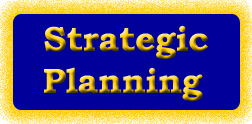 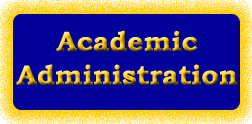  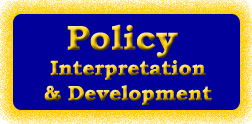 |
![]()
Dean's
Roles & Responsibilities | Relevant
Quotes about Education | References
| Relevant
Links
Top
Schools of Education: Mission Statements
(Sources
/ Education Deans: Position Descriptions)
Page Created on November 20,
2007 || Last updated on December 10, 2007
Copyright ©
2007 Nada M. Salem
http://www.nadasisland.com/dean